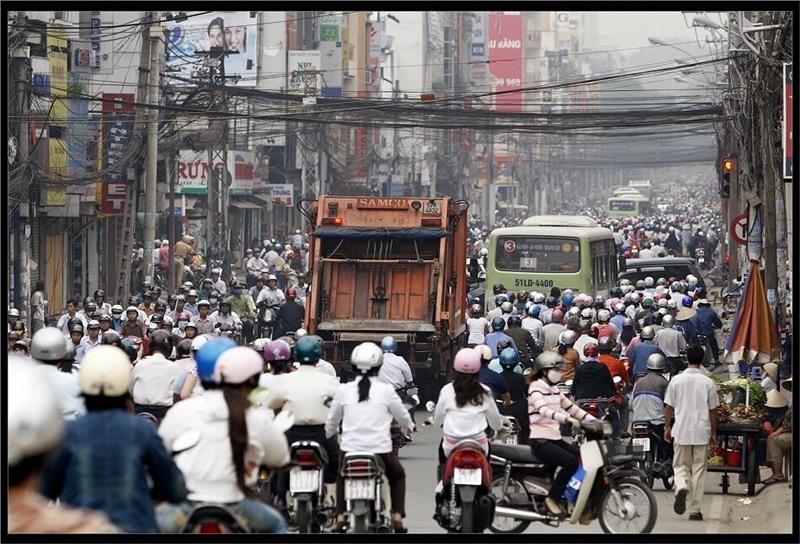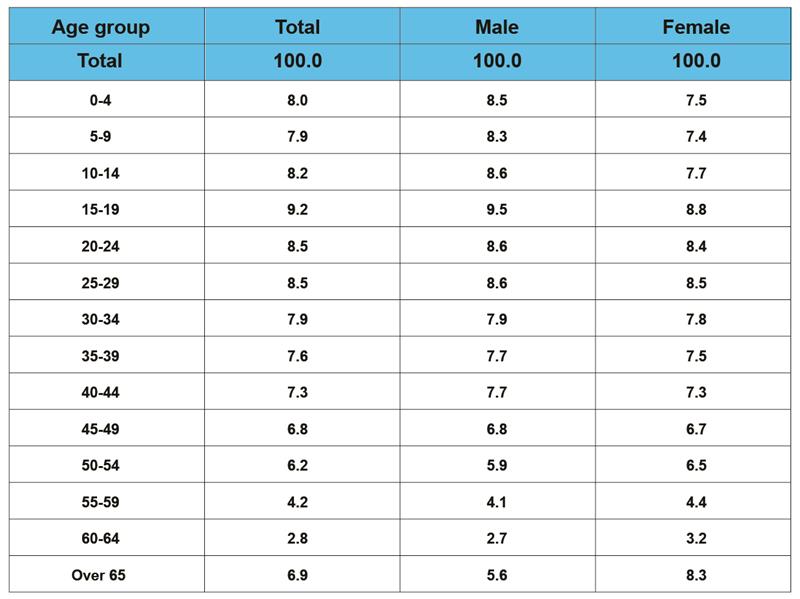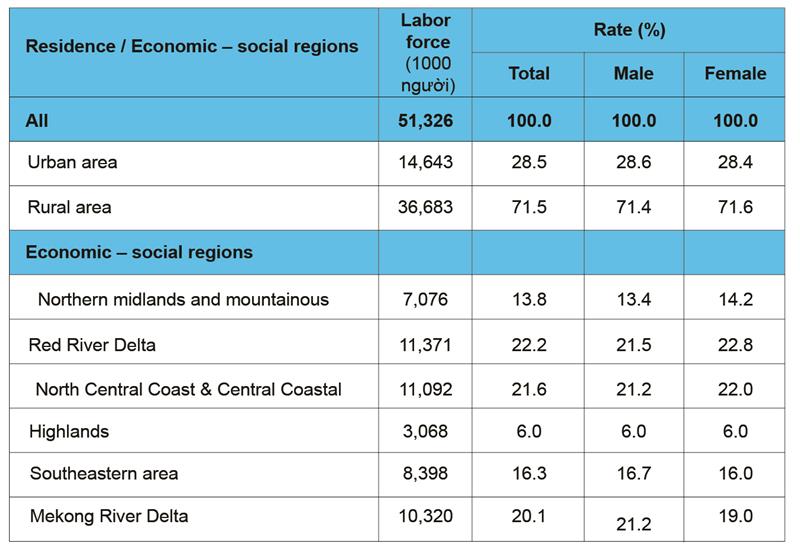Vietnam is a nation of 54 ethnic groups. There are 53 ethnic minorities accounting for about 14% of the total population of the country. Meanwhile, Kinh group (Vietnamese) accounts for nearly 86%, mostly in deltas and coastal plains. These ethnic minorities, except the Chinese, Cham and Khmer, concentrate in mountainous areas and highlands. Among minorities, the most populous ethnic groups are Tay, Thai, Muong, Hoa, Khmer, and Nung, each group has a population of about one million people. The ethnic groups of Brau, Ro Mam, O Du have the least population, with a few hundred for each group. There are several ethnic minorities settling in Vietnam for a long time, but there are ethnic groups newly immigrating in Vietnam for a few hundred years ago such as the Chinese group in Southern Vietnam. Among ethnic groups, the population of Chinese and Ngai groups decreased in the 1999-2009 period. Vietnam is a populous country, though the area ranked 65th, but Vietnam population ranks 13th in the world.
The population growth in Vietnam increases rapidly over the time. According to historical records, around 2000 BC, Vietnam population was about 1 million people. In 1901, the country has 10 million people. After 25 years, the figure was 16,308 million people. From 1926 to 1965, in 30-year period, the population increased more than 2 times. From 1960 to 1985, just after 25 years the population has doubled. That can be seen the blooming of Vietnam population. Since 1986, the population growth rate has been decreasing each year, opening up the prospect of implementing the goal of a stable population since the mid-21st century.

According to an investigation by the General Statistics Office of Vietnam (GSO) by April 1, 2009, Vietnam has around 85,846,997 people, distributing in socio-economic regions. The most populous area is Red River Delta with approximately 19.5 million people, followed by the North Central Coast and South Central Coast with about 18.8 million people, and Mekong River Delta with approximately 17.1 million people. The least populated region is Highlands with approximately 5.1 million people. According to estimates from The World Factbook published by the CIA in July 2011, the population of Vietnam is 90.54939 million people, ranked 14 in the world. The survey shows that Vietnam has about 25.4 million people, equal to 29.6 % living in urban areas and about 60.4 million people residing in rural areas. The average sex ratio is now 98 males/100 females, in Highlands the ratio is the highest with 102 males/100 females, and lowlands in Southeast has the least ratio with 95 males/100 females.
As of April 1, 2011, population in Vietnam was 87,610,947 of which the urban population accounted for 30.6%. The rural population made up for 69.4%. The number of male was 43,347,731 (49.5%), that of female was 4,263,216 people (50.5%). The Red River Delta has the largest scale of population, followed by North and South Central Coasts, while Highlands has the least population. Annually, Vietnam population growth increases by nearly 1 million people. There are about 1 million people joining labor force, which creates great pressure for the government on creating more jobs for workers. Vietnam population structure is of the “young population” group. People under working age group accounted for 31.8%, of who less than 15 years old made up for 24.1%.

Labor force in Vietnam mainly concentrates in three areas including Red River Delta, North Central Coast, South Central Coast and Mekong River Delta. Thus, rural areas and three social economic areas are places where programs on exploiting labor force, vocational training and job creation should be conducted in coming years. Labor force rate of the population aged 15 and older is 76.5%. While the highest labor force rate is in Northern midland and mountainous area and Central Highlands (84.2% and 83.4%). This proportion is quite low in other areas (approximately 75-77%).

Vietnam is in the period of “golden population structure”. The birth rate in Vietnam is continuously lower than the replacement level. In addition, the aging population in Vietnam is on the increase. The aging population has a significance on Vietnam economy and security in the future. The rate of aging population also differs between regions. Because of the geographic differences, it leads to uneven level of population aging this country. In general, in urban areas and deltas the proportion of old people is higher than that in the mountainous and remote areas. Aging is the result of two factors: declining fertility rate and increasing life expectancy. In the next 40 years, the fertility rate in Vietnam falls rapidly, and the life expectancy rate increases. The rise of average life expectancy is largely due to a decrease in rate of infant mortality. Currently, the infant mortality rate (per 1000 live births) is 20.4, but it is expected to decline to 15.3 in 2020 and 10.8 in 2050. Vietnam has about 5 million elderly (over 65). In next 9 years, the number will increase to 7.2 million (by 45 %). However, the number by 2050 is predicted to be nearly 22 million, an increase of 4.4 times higher than today. Changes in population structure and aging trend will trigger social and health consequences. The increase of Vietnam aging population poses a huge demand for social security and health care in the future. Elderly people often suffer from chronic diseases (such as cancer, diabetes, osteoarthritis), so the burden of chronic diseases will increase rapidly over the next 40 years. This increase requires for investments in health and strategies for social welfare.
